
Watermelon and other cucurbit plants can become infected with numerous, common fungal and bacterial pathogens. Many have similar but observably different symptoms. This article is a quick and helpful guide toward possible identification and diagnosis.
Do The Diseases Come From The Watermelon Seed?
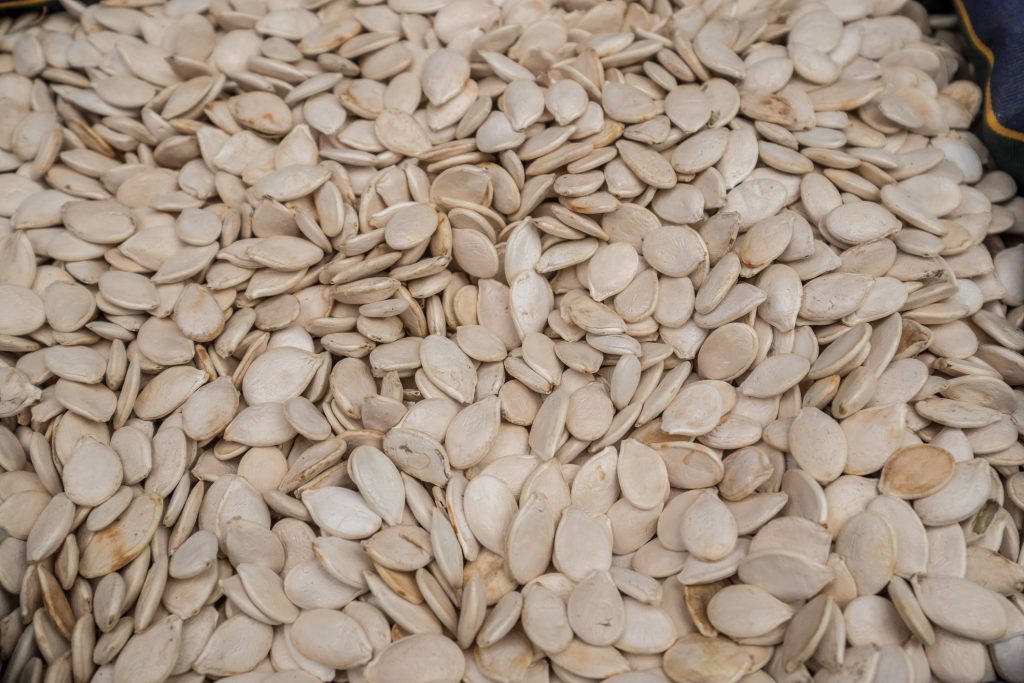
Some of these pathogens can be seed-borne and although at Jung Seed Company we procure all our seeds from reputable sources, and rigorously test for germination standards many pathogens such as Bacterial Fruit Blotch, may be present on a seed coat without our knowledge. This is true for any seed you may purchase. So, no matter where or whom you purchase seed from, you must be aware of the symptoms to help prevent the spread of these transmittable diseases.
Fungal Watermelon Diseases
Alternaria leaf spot or Brown spot (Alternaria spp.)
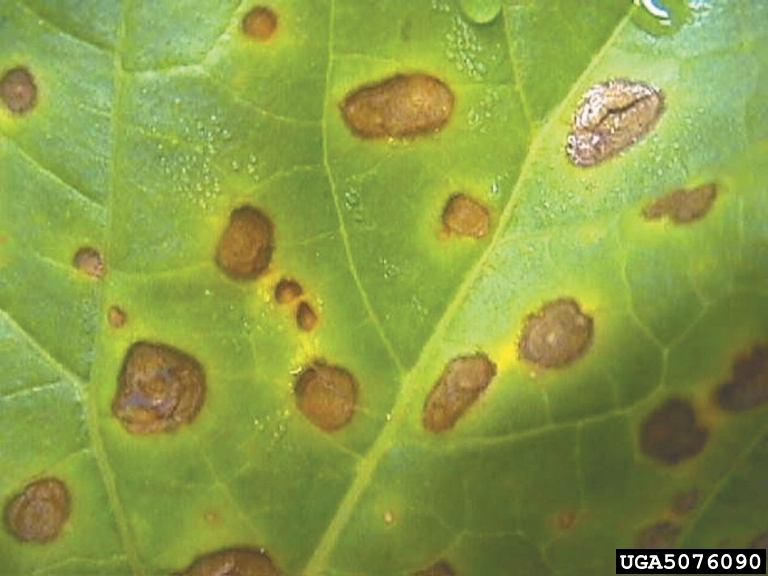
Symptoms: Small, yellow-brown spots with a yellow or green halo which first appear on the oldest leaves; as the disease progresses, lesions expand and become large dead patches, often with a concentric pattern; lesions eventually grow together, leaves begin to curl and eventually die off.
Control: Rotate crop with non-cucurbit for at least 2 years; plow crop debris deeply into the soil after harvest; avoid overhead irrigation, water plants at base; apply appropriate protective fungicides. Spores survive on plant debris; transmitted via wind and rain.
Fusarium wilt (Fusarium oxysporum)
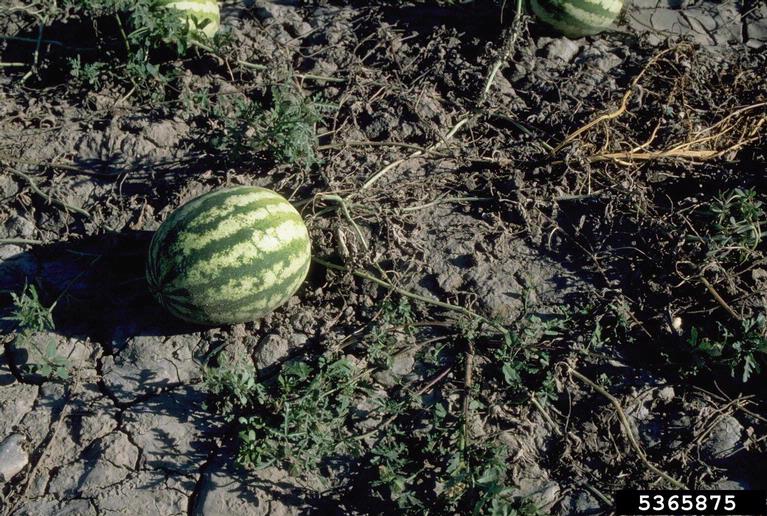
Symptoms: Wilting plants; wilting usually confined to one or more vines; foliage has a dull gray-green appearance and turns yellow as the disease progresses; vascular tissue has a red discoloration.
Control: Plant in well-draining soils and avoid waterlogging; plant fungicide treated seed; rotate crops on a 4-year rotation. Can be spread through infected seeds.
Anthracnose Colletotrichum orbiculare
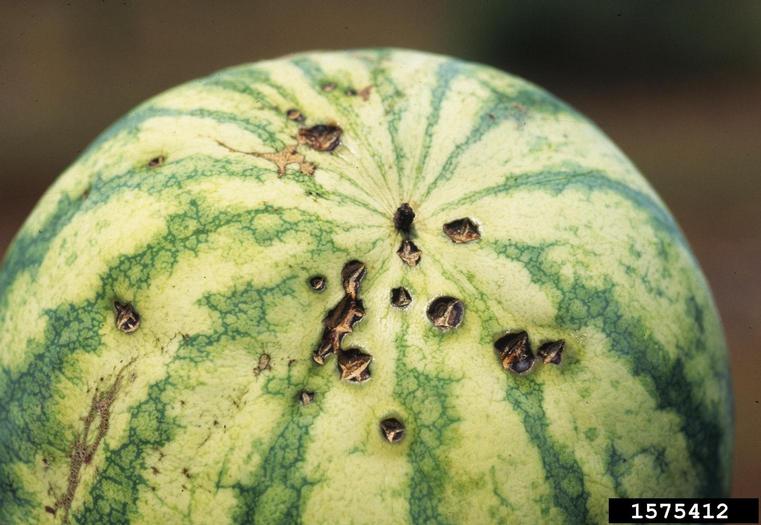
Symptoms: Angular dark brown or black spots or lesions on leaves with yellow border; elongated lesions with sunken centers on stems and fruit.
Control: Rotate crops with non-cucurbits every 1-2 years to prevent disease build-up; plant only disease-free, or treated seed. Spread by wind and rain.
Cercospora leaf spot (Cercospora citrulline)
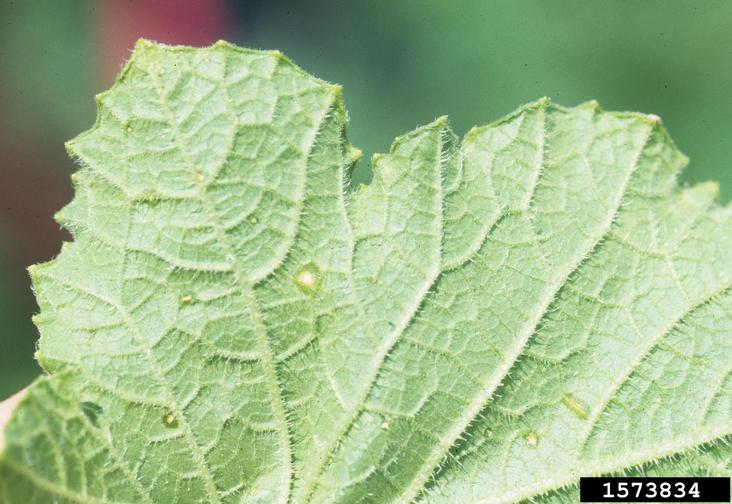
Symptoms: Initial symptoms of the disease occur on older leaves as small spots with light to tan-brown centers; as the disease progresses, the lesions enlarge to cover large areas of the leaf surface; lesions may have a dark border and be surrounded by a chlorotic area; the centers of the lesions may become brittle and crack.
Control: Diseased plants should be removed and destroyed to prevent further spread; crop debris should be removed after harvest or plowed deeply into the soil to reduce inoculum. The fungus survives on plant debris; spread by wind and water splash; occurs mainly in tropical and subtropical growing regions.
Gummy stem blight (Didymella bryoniae)
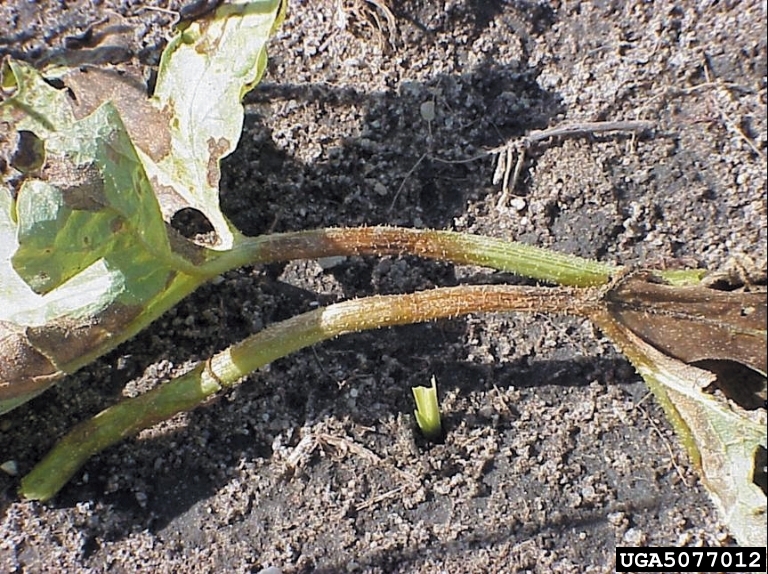
Symptoms: Round or irregular brown lesions with faint concentric rings on cotyledons; brown or white lesions on crown and stems; soft, circular brown lesions on fruit; lesions on stems and fruit may be oozing an amber-colored sticky substance.
Control: Rotate crops every 2-3 years to a non-cucurbit to reduce disease build-up in soil; reduce crop residue in soil by plowing plant debris into the soil after harvest; application of preventative fungicides is usually required to control the disease successfully. Can be spread by infected seed.
Verticillium wilt (Verticillium dahlia)

Symptoms: Generally, symptoms appear after fruit set; chlorotic leaves which develop necrotic areas; leaves collapsing; symptoms only on one side of the vine; discoloration of vascular tissue in roots.
Control: Favored by cool or mild weather in spring, delay planting until temperatures are warmer. Do not plant in areas where other susceptible crops have been grown previously. Can survive in the soil for many years. If suspicion of VW exists, plant in a different field.
Bacterial Watermelon Diseases
Angular leaf spot (Pseudomonas syringae)
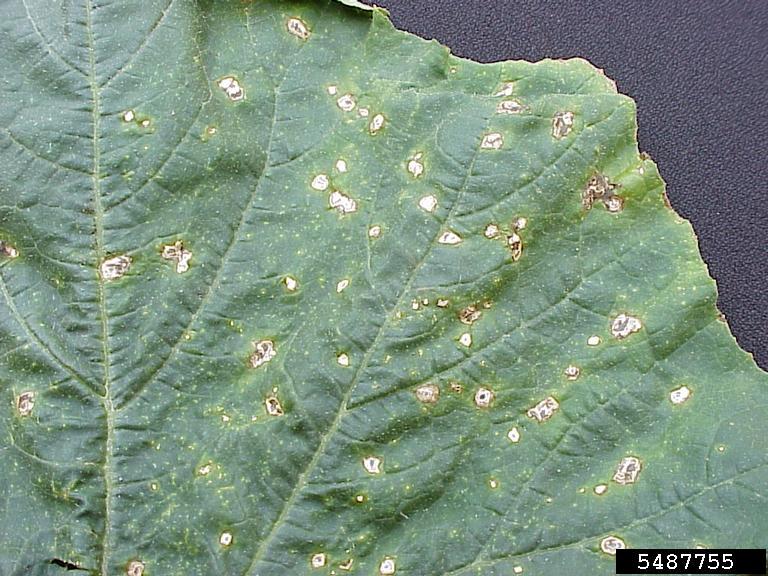
Symptoms: Small water-soaked lesions on leaves which expand between leaf veins and become angular in shape; in humid conditions, lesions exude a milky substance which dries to form a white crust on or beside lesions; as the disease progresses, lesions turn tan and may have yellow/green edges; the centers of the lesions dry and may drop out leaving a hole in the leaf.
Control: Do not grow plants in fields where cucurbits have been grown for 2 years; protective copper sprays may help reduce the incidence of disease in warm, humid climates; plant resistant varieties.
Bacterial fruit blotch (BFB) (Acidovorax avenae)
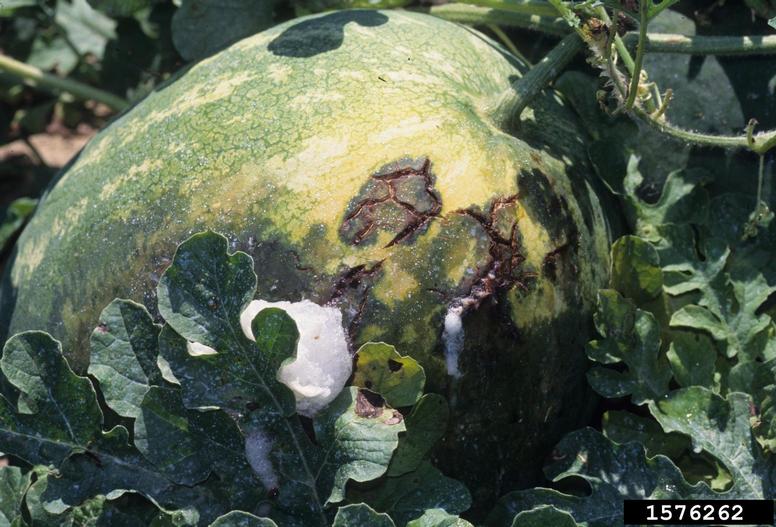
Symptoms: Small water-soaked lesions on top or sides of fruit that enlarge over the surface; lesions on fruit may turn reddish or brown and distinctive cracks will develop before fruits rot.
Control: Rotate crops; avoid the use of overhead irrigation. Spread by water splash; disease favors wet conditions. BFB can spread through infected seeds. If symptoms are observed, copper fungicide spray should be applied immediately after planting on a 7 to 10-day schedule. If no symptoms are observed but BFB is suspected, copper fungicide sprays can also be applied when the first male flowers appear. Continue spray applications until all fruits have reached maturity.
Any equipment and tools used in fields containing infected plants should be thoroughly cleaned and sterilized before using around any other cucurbit crops and deep plowing all residual plant debris. If suspicious symptoms of BFB are observed, remove infected plants to have them diagnosed immediately by a qualified plant pathology lab specialist associated with your local agricultural extension service. Proper identification of BFB is essential because other less harmful bacteria can produce identical symptoms on seedling plants.
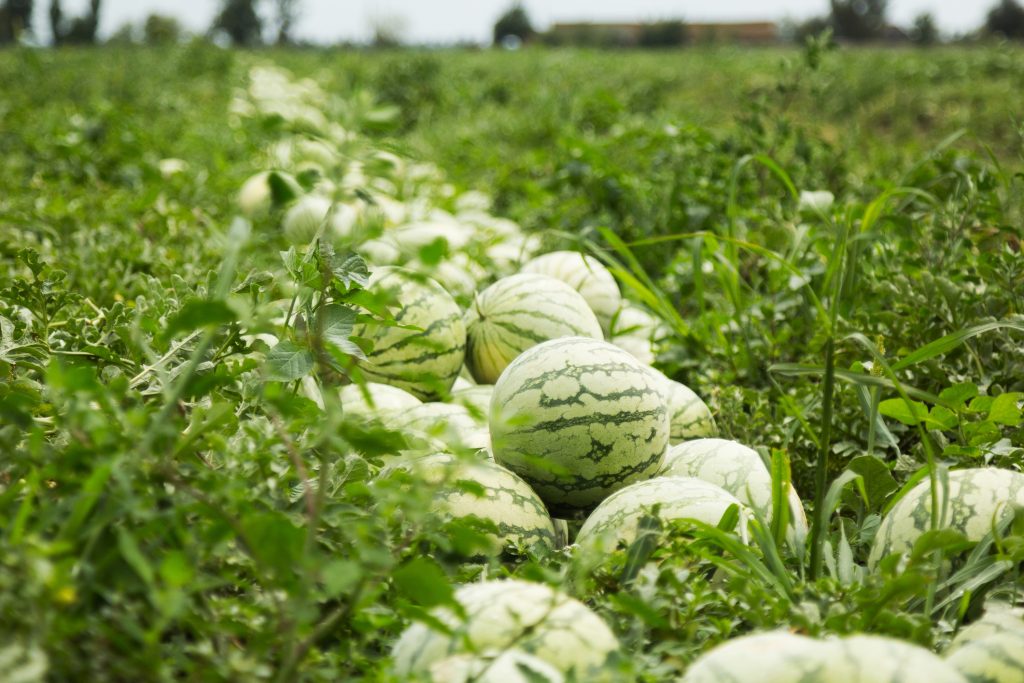
If you believe or find out that your plants are infected with one of these diseases, you can follow some of the suggested management and control of these types of destructive pathogens. Time is one of the best management tools for avoiding many of these issues. Guidelines are given for each pathogen listed for how many years should pass before re-planting with melons or cucurbits again. Remember, that although this article helps with identification and diagnosis, 100% diagnosis can only be made by a qualified university or agricultural extension service and their plant pathology lab specialists.
Other Recommended Reading

- How To Prevent Yellow Shoulder Disorder On Tomatoes
- Black Rot On Grapes: Prevention & Management
- Horticultural Oil For Pest Control
- Rose Pests – Identification & Solutions
View our new Summer/Fall catalog online or browse our website for all of your gardening favorites. To receive info on new products, exclusive deals, and specials, be sure to sign up for our weekly email. Join our Facebook page, to discuss all things gardening!
